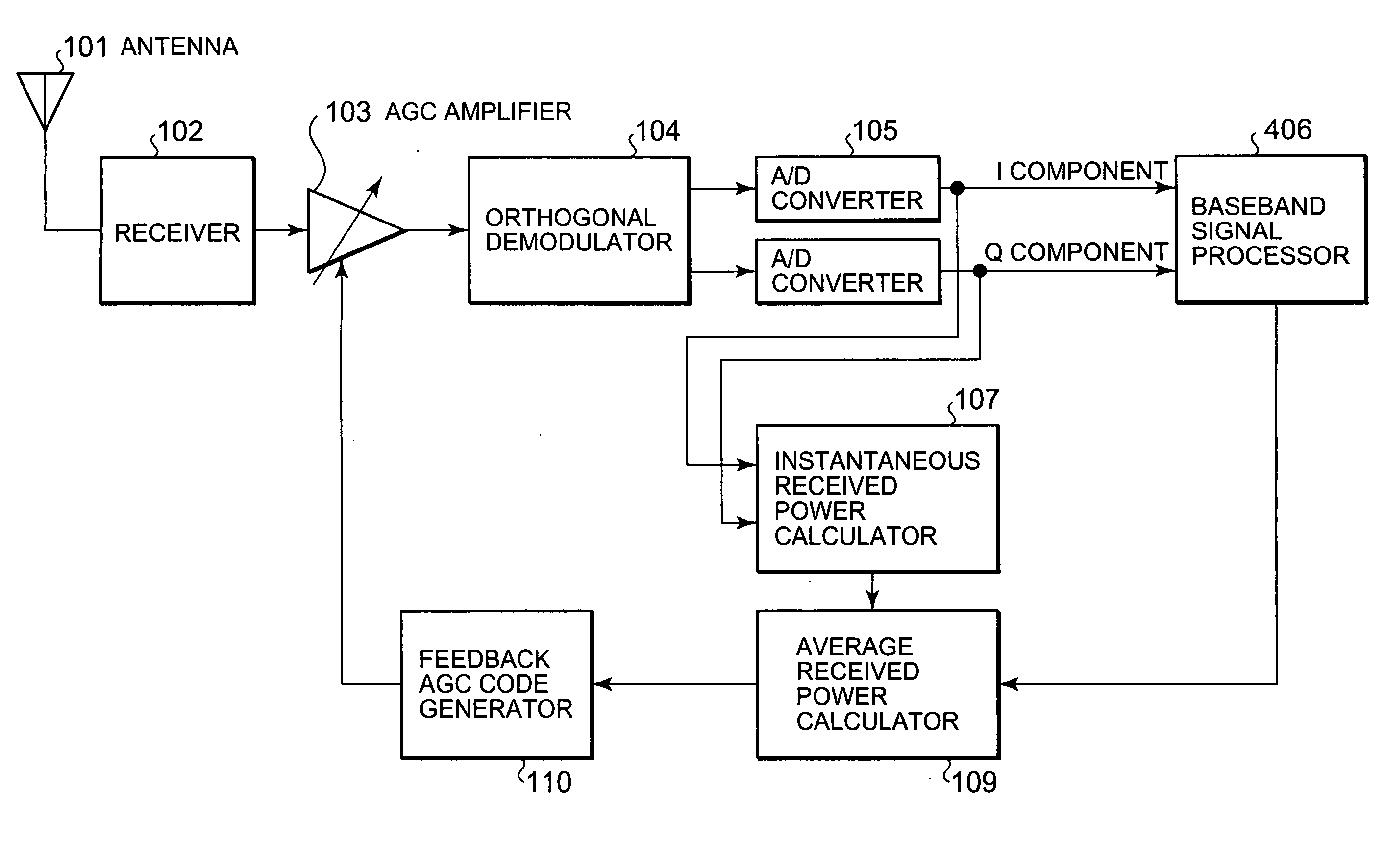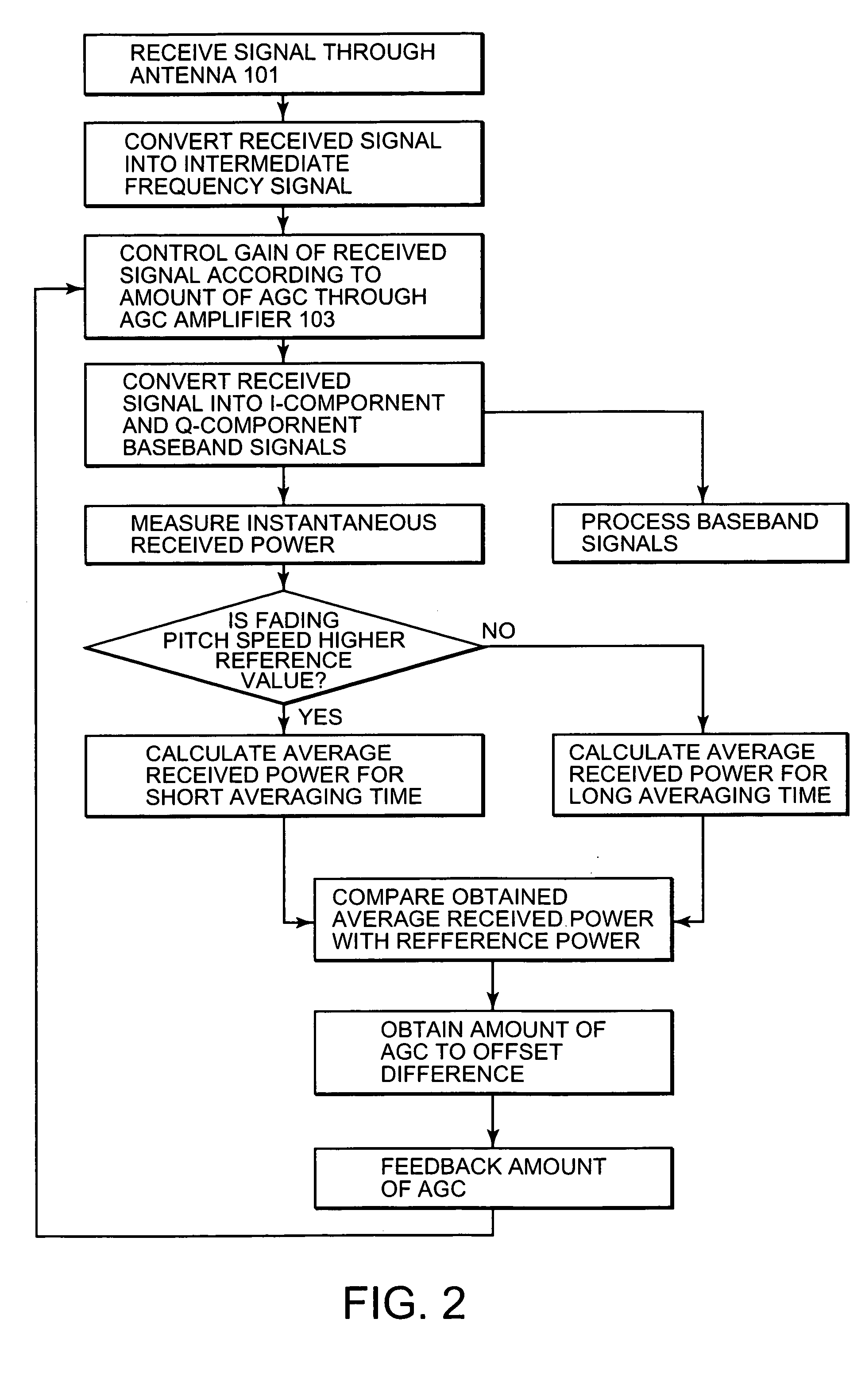Automatic gain control method for radio communication mobile station
- Summary
- Abstract
- Description
- Claims
- Application Information
AI Technical Summary
Benefits of technology
Problems solved by technology
Method used
Image
Examples
first embodiment
[0037]FIG. 1 is a block diagram of a radio communication mobile station according to the present invention.
[0038] The radio communication mobile station according to the present embodiment includes an antenna 101 for receiving a radio signal transmitted from a base station (not shown), a receiver 102 for performing radio signal processing, e.g., frequency-converting the received signal having a radio frequency bandwidth into a radio signal having an intermediate frequency bandwidth, an AGC amplifier 103 of which gain is controllable depending on the power of the received signal, an orthogonal demodulator 104 for performing orthogonal demodulation and frequency conversion to the intermediate frequency signal to produce I-component and Q-component baseband signals, analog-to-digital (AD) converters 105 for converting the I-component and Q-component baseband signals, that are analog, into digital signals, respectively, a baseband signal processor 106 for performing digital signal proce...
second embodiment
[0056]FIG. 4 is a block diagram of a radio communication mobile station according to the present invention. Referring to FIG. 4, the same components as those in FIG. 1 are designated by the same reference numerals.
[0057] According to the foregoing first embodiment, radio waves from the base station are received and the fading pitch thereof is then measured. Averaging time required to calculate the average received power used in controlling the AGC amplifier is changed depending on the measured fading pitch. According to the present embodiment, a base station transmits fading pitch information. A radio communication mobile station receives the fading pitch information and changes averaging time according to the received fading pitch information. The averaging time is required to calculate average received power used in controlling the gain of an AGC amplifier.
[0058] Generally, a fading pitch is high in a specific location such as an expressway or a high-rise community. In such an ar...
PUM
 Login to View More
Login to View More Abstract
Description
Claims
Application Information
 Login to View More
Login to View More - R&D
- Intellectual Property
- Life Sciences
- Materials
- Tech Scout
- Unparalleled Data Quality
- Higher Quality Content
- 60% Fewer Hallucinations
Browse by: Latest US Patents, China's latest patents, Technical Efficacy Thesaurus, Application Domain, Technology Topic, Popular Technical Reports.
© 2025 PatSnap. All rights reserved.Legal|Privacy policy|Modern Slavery Act Transparency Statement|Sitemap|About US| Contact US: help@patsnap.com



